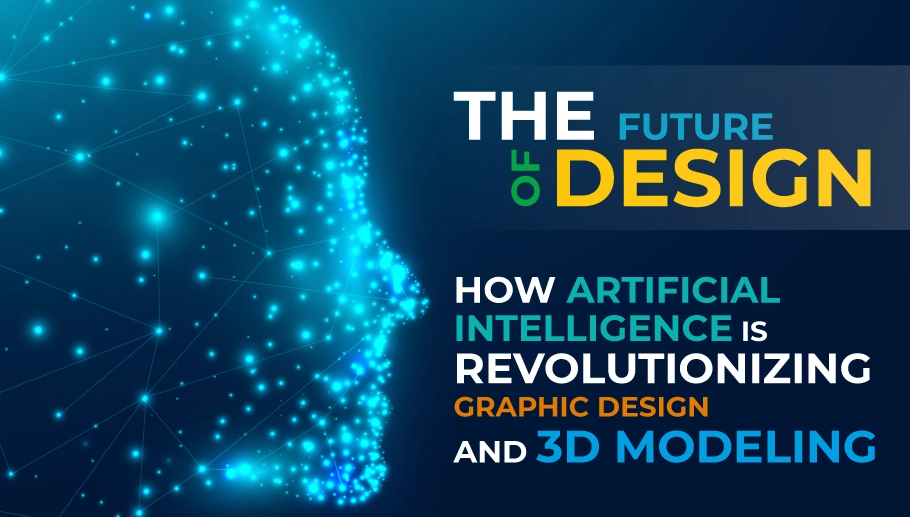- contact@dannygrafix.com
- Olugbede Plaza, Egbeda Idimu Rd, Egbeda, Alimosho, Lagos State.
What's Next for Graphic Design
The world of graphic design is in constant evolution, shaped by technological advancements, shifting consumer preferences, and the ever-changing landscape of visual communication. As businesses and creatives alike adapt to the digital era, the future of graphic design promises to be more dynamic, immersive, and user-centered than ever before. Industry insiders are already identifying several key trends and technological innovations that will influence the next wave of graphic design. Here’s a glimpse of what’s next for the industry:

1. The Rise of Artificial Intelligence (AI) in Design
Artificial intelligence (AI) is becoming an indispensable tool in graphic design, transforming the creative process and the way designers work. From automating repetitive tasks to generating design elements based on user inputs, AI tools like Adobe Sensei and Canva’s AI-powered suggestions are helping designers save time and streamline their workflows. In the near future, we can expect AI to take a more prominent role in design generation, allowing for more personalized, data-driven designs that respond to user behavior and preferences. However, experts also note that while AI will enhance creativity, it won’t replace the need for human ingenuity and artistic intuition.
2. 3D Design and Immersive Experiences
With the increasing popularity of virtual and augmented reality (VR and AR) technologies, graphic design is expanding beyond two-dimensional layouts to embrace immersive, 3D experiences. 3D design tools are becoming more accessible, enabling designers to create hyper-realistic visuals and interactive content. Industry insiders predict that 3D elements will become a standard feature across websites, advertising, and social media, offering users a more engaging and interactive experience. This shift toward immersive design is also driven by the growth of the metaverse, where brands are looking to create virtual spaces and experiences that blur the line between digital and physical worlds.
3. Motion Graphics and Animation
As attention spans shrink and the demand for dynamic content grows, motion graphics and animation are taking center stage in the graphic design industry. These animated elements are particularly effective in capturing audience attention on social media, websites, and digital ads. Industry experts foresee motion graphics playing a larger role in storytelling, brand communication, and UI/UX design, where animated transitions and micro-interactions will become essential in enhancing the user experience.
4. Minimalism Meets Bold Design
While minimalism has long been a hallmark of modern graphic design, insiders predict a fusion of minimalistic layouts with bold, expressive design elements. Think clean, uncluttered spaces combined with bright colors, bold typography, and striking imagery. This contrast between simplicity and statement-making visuals will be key in grabbing attention while maintaining a sophisticated aesthetic. Designers are also focusing on creating designs that are not only visually striking but also accessible and easy to navigate.
5. Sustainable and Inclusive Design
As consumers become more environmentally and socially conscious, graphic designers are embracing sustainability and inclusivity in their work. Brands are increasingly opting for eco-friendly designs that minimize waste and reduce the carbon footprint. At the same time, designers are placing greater emphasis on inclusivity, ensuring that their designs are accessible to diverse audiences, including those with disabilities. This involves creating content that adheres to web accessibility standards, using inclusive imagery, and choosing color schemes that accommodate visual impairments like color
6. Personalized, Data-Driven Design
Personalization is becoming a major trend in the design industry, with brands seeking to create more tailored experiences for their audiences. Thanks to advancements in data analytics and machine learning, designers can now create personalized visuals that adapt to individual preferences, location, and behavior. This trend is expected to accelerate as companies invest more in creating targeted, user-centered designs that foster deeper connections with their audiences.
In conclusion
The future of graphic design is one of exciting possibilities, driven by technological innovation and a growing emphasis on user-centered experiences. As AI, 3D design, motion graphics, and immersive technologies continue to evolve, designers will have more tools than ever to push creative boundaries and deliver engaging, impactful visuals. At the same time, the focus on sustainability, inclusivity, and personalization will ensure that design remains not only aesthetically pleasing but also meaningful and accessible to all.
